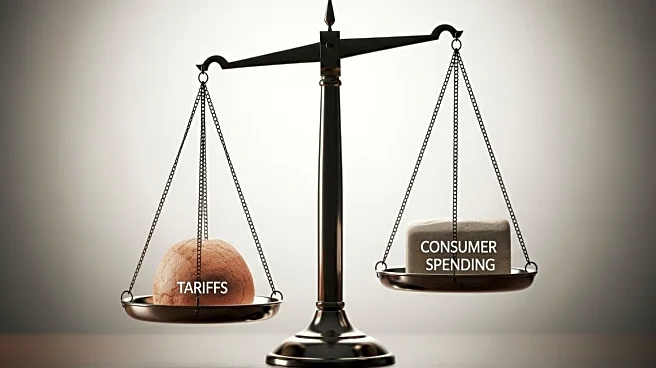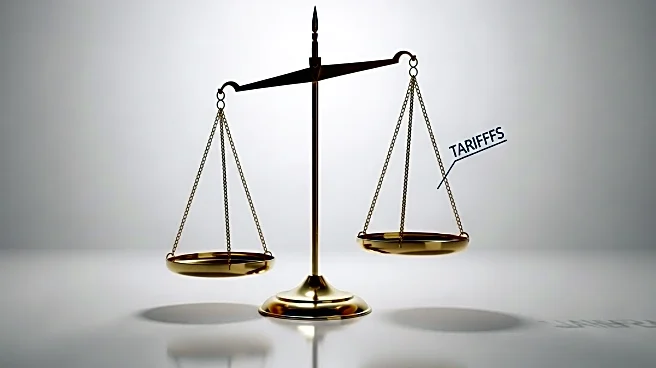What's Happening?
The Federal Reserve's preferred inflation gauge held steady in July, despite President Trump's tariffs, with core inflation rising slightly. Prices increased 2.6% annually, while core prices excluding food and energy rose 2.9%, the highest since February. Consumer spending jumped 0.5%, driven by purchases of durable goods like cars and appliances. The data suggests that while inflation remains above the Fed's target, consumer activity is robust, potentially supporting economic growth.
Why It's Important?
The stability in inflation and rise in consumer spending are crucial for economic health, influencing the Federal Reserve's monetary policy decisions. While tariffs have not significantly impacted prices yet, ongoing trade tensions could affect future inflation trends. The increase in consumer spending indicates resilience in the economy, but high interest rates and economic uncertainty pose challenges. Industries reliant on consumer purchases may benefit, but the broader economy faces risks from persistent inflation.
What's Next?
The Federal Reserve is expected to proceed with a rate cut at its September meeting, aiming to balance inflation control with economic support. Policymakers will monitor consumer spending and inflation data closely, adjusting strategies as needed. The impact of tariffs on prices and economic activity will be a key focus, with potential implications for trade policy and international relations.












